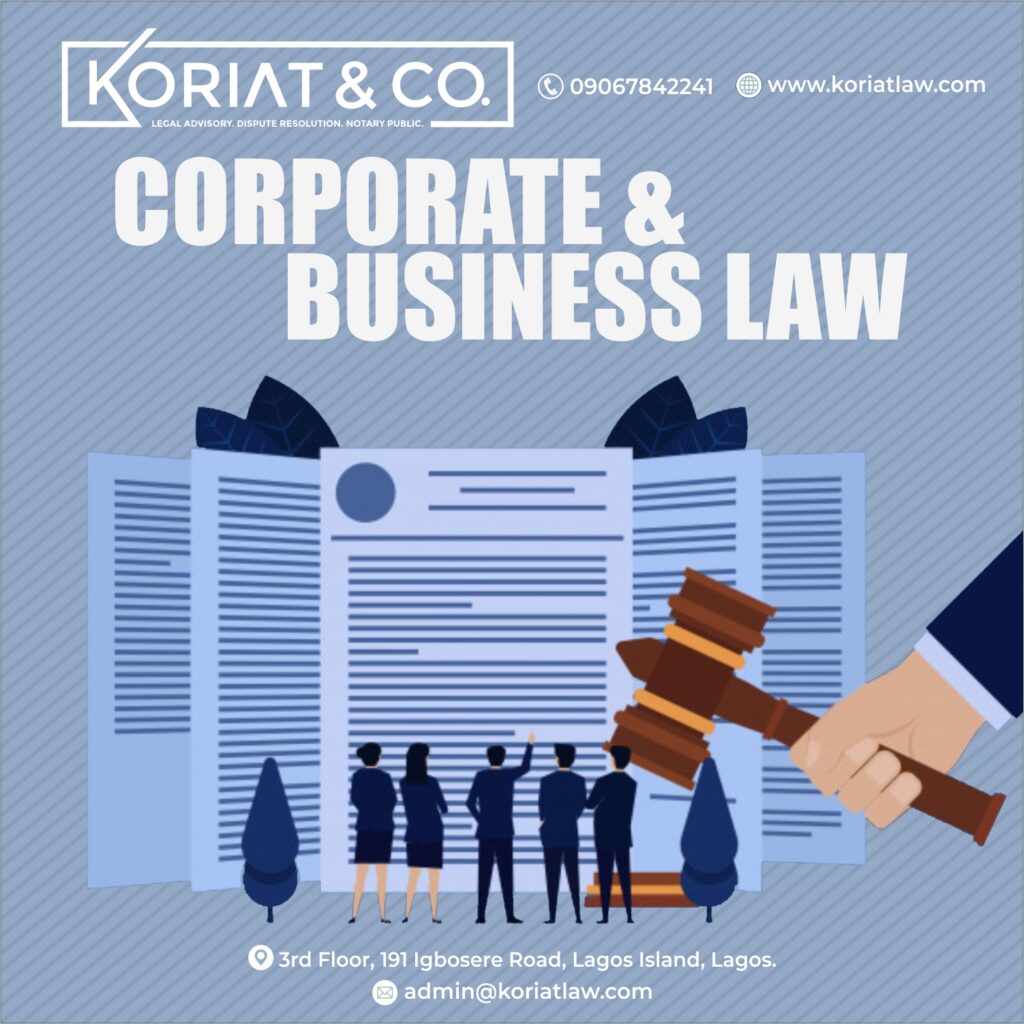
Introduction
Mergers are a critical tool for corporate restructuring and business growth. In Nigeria, the merger process is regulated by a robust legal framework designed to ensure compliance with competition laws, protect consumer interests and promote economic efficiency. Below is an in-depth explanation of the merger process under Nigerian Law.
Legal Framework Governing Mergers in Nigeria
The key laws that govern mergers in Nigeria include:
- Investment and Securities Act 2007 (ISA) which is administered by the Securities and Exchange Commission (“SEC”);
- Securities and Exchange Commission Rules (SEC) Rules;
- Merger Review Regulations 2020;
- Merger Review (Amendment) Regulations 2021;
- Federal Competition and Consumer Protection Act 2019 (FCCPA)
- Federal Competition and Consumer Protection Commission (FCCPC)
- Companies and Allied Matters Act 2020 (CAMA) which is administered by the Corporate Affairs Commission (“CAC”).
Meaning of a Merger
By the provision of Section 92(1)(a) of the Federal Competition Consumer Protection Act (FCCPA), “merger occurs when one or more undertakings directly or indirectly acquire or establish direct or indirect control over the whole or part of the business of another undertaking”.The aforementioned provision is also provided in Rules 421(1) of SEC Rules and Section 119(1) of ISA.
In other words, a merger occurs where two or more companies agree to combine their operations and form a new, bigger and better unified business, aimed at achieving growth, efficiency, and competitive advantage in the marketplace.
This process is typically collaborative, with both parties working together to achieve mutual benefits. This process can involve one company acquiring another or both companies coming together to create a new organization.
Strategic Objectives of Mergers
Companies pursue mergers for various reasons, including:
- Expanding market share: Merger help companies expand their market in several ways:
- Combining Customers Bases: A merger allows companies to serve a larger customer base.
- Increased product offering: Merging entities can offer a broader range of products or services. often result in a broader range of products or services.
- Geographic Expansion: Mergers can facilitate entry into new geographic markets. For instance, if one company has a strong presence in one region and another company has a foothold in a different area, merging allows the new entity to leverage both networks, thereby expanding its market reach.
- Improved Brand Recognition: Combining brands can enhance reputation and attract more customers.
- Elimination of Competition: By acquiring competitors, companies can secure a larger share of the market.
- Achieving economies of scale: Merger enable businesses to reduce per unit cost by increasing production levels, leading to greater efficiency and profitability.
- Gaining access to new technologies or products: Merging with another company grants access to proprietary technologies, patent, and intellectual property, which can be used to improve product offerings without starting from scratch.
How can a Merger of companies be achieved?
Merger can be achieved through the following ways as stipulated in Section 92(1) (b) of FCCPA:
- Through the acquisition of shares, interests, or assets of a company by another company.
- Through the amalgamation of two or more companies in order to form a new legal entity.
- Through a joint venture: A joint venture is a strategic business arrangement where two or more parties collaborate, pooling resources and expertise to achieve a common goal while retaining independence. The aforementioned is also provided in section 119(2) of ISA.
Types of Mergers
- Horizontal Merger: This is when companies in the same industry and at the same stage of production merge to consolidate market power. For example, a horizontal merger takes place between two manufacturers, two distributors or two retailers;
- Vertical Merger: This is when companies at different stages of the supply chain combine, enhancing operational efficiency and reducing costs.
- Conglomerate Merger: This is when companies from unrelated industries merge to diversify their business interests and reduce risk.
The above type of mergers is provided for in Regulation 24(1)(a),(b) & (c) of the Merger Review Guidelines 2020 and Section 421(1) of SEC Rules.
Classification of Mergers
Under sections 11 and 12 of the FCCPA, mergers are classified as:
- Small Merger
- Large Merger
1. Small Merger: Under section 1(1)(a) and (b) of the Notice of threshold for merger Notification pursuant to section 92(4) of FCCPA, a small merger is said to be a merger that occurs where in the financial years preceding the merger the combined annual turnover of the acquiring undertaking and the target undertaking (combined figure) is N1 billion or below OR the annual turnover of the target undertaking is 500million Naira or below.
2. Large Merger: Under section 1(1)(a) and (b) of the Notice of threshold for merger Notification pursuant to section 92(4) of FCCPA, “a large merger isa merger that occurs where in the financial years preceding the merger the combined annual turnover of the acquiring undertaking and the target undertaking (combined figure) is above N1 billion OR the annual turnover of the target undertaking is above 500 Million Naira.
Legal and Regulatory Approval for Mergers in Nigeria
Mergers often require approval from regulatory bodies to ensure compliance with competition laws and to prevent monopolistic practices that could harm consumers and the market. In Nigeria, the Federal Competition and Consumer Protection Commission (FCCPC) and the Securities and Exchange Commission (SEC) oversees merger approvals.
By the provision of section 93(1) of the FCCPA, “a proposed merger shall not be implemented unless it has been notified to and approved by the FCCPC.
Notification requirement for a Small Merger
Under the provision of section 95(1) (a) and (b) of FCCPA, “a party to a small merger is NOT required to notify the FCCPC of that merger unless the FCCPC requires it to do so in accordance with the provision of section 93(3) of FCCPA and Regulation 11(1) of the FCCPC Merger Review Regulation 2020, if in the opinion of the FCCPC, the small merger will likely lessen competition.
Section 93(3) of FCCPA provides that “within 6months after a small merger is implemented the FCCPC may require the parties to that merger to notify it of the merger in the prescribed manner and form, if, in the opinion of the FCCPC, having regard to the provisions of the section, the merger may substantially prevent or lessen competition. However, by the provisions of Rules 424(1)(b) of SEC Rules, in a small merger, the merging entities are not required to notify SEC of that merger as a precondition for the merger but shall be required to inform SEC at the conclusion of the merger.
Merger Review Process
Merger review process is governed by the FCCPC’s Merger Review Guidelines 2020 and the 2021 Amendment. The mechanism is designed to assess the competitive implications of proposed mergers.
The FCCPC and SEC in reviewing the proposed merger, considers several factors as contained in section 94(1) of the FCCPC and section 121(1) of ISA before approving the proposed merger. The above sections provides that: “if it appears that the merger is likely to substantially prevent or lessen competition, the FCCPC and SEC will consider the following before its approval:
- Whether or not the merger is likely to result in any technological efficiency.
- Whether the merger is likely to result in other pro-competitive gain which will be greater than and off set the effect of any prevention or lessening of the competition, while allowing consumers a fair share of the resulting benefit.
- Whether the above stated result would not likely be obtained if the merger is prevented.
- Whether all shareholders are fairly, equitably and similarly treated and given sufficient information regarding the merger.
- Whether the merger can or cannot be justified on substantial public interest grounds.
By virtue of section 94(4) of FCCPA when determining whether a merger or proposed merger can or cannot be justified on grounds of public interest, the FCCPC and SEC shall consider the effect that the merger or proposed merger will have on the following:
- employment
- particular industrial sector or region
- the ability of national industries to compete in international market
- the ability of small and medium scale enterprises to become competitive
According to section 94(2)(a)-(h) of FCCPA and section 122(2) of ISA, the FCCPC and SEC, in addition to the above factors shall assess the following:
- The strength of competition in the relevant market and
- The probability that the undertakings in the market after the merger will behave competitively or co-operatively taking into account any factor that is relevant to the competition in the market, including:
- the actual and potential level of import competition in the market
- the ease of entry into the market, including tariff and regulatory barriers
- the level and trends of concentration, and history of collusion in the market
- the degree of countervailing power in the market
- the dynamic characteristics of the market, including growth, innovation, and product differentiation
- the nature and extent of vertical integration
- whether the business or part of the business of a party to the merger or proposed merger has failed or is likely to fail
- whether the merger or proposed merger will result in the removal of an effective competitor.
It follows therefore that, even if a merger is likely to substantially prevent or reduce competition, it may still be approved by the FCCPC and SEC if it satisfies any of the factors to be considered by the FCCPC and SEC as mentioned above.
Required Documents for Merger Notification
The following documents are typically required for both small and large mergers:
- Extract of board resolutions of the merging companies authorizing the merger duly certified by a director and the company secretary.
- A copy of the letter appointing the Financial Adviser(s)
- Copy of certificate of incorporation certified by the company secretary
- CAC certified true copy of particulars of directors and allotment of shares
- Letter of no object from company’s’ regulators.(where applicable).
- The audited accounts of the merging entities for the preceding five (5)years or the number of years any of the companies have been in operation if less than five (5)years
- Applicable merger notification fee of N50,000 (fifty thousand naira) per merging company. The above was provided in Rules 426(1) (ix) (a)-(h) of SEC Rules
Procedures for Obtaining Approval for Mergers
Companies proposing a merger shall file with the SEC the following as provided in Rules 425 of SEC Rules:
- a merger notification for evaluation;
- an application in the Federal High Court seeking an order to convene a court ordered meeting;
- following the resolution of the shareholders at the court ordered meeting, the applicants shall file with the SEC a formal application for approval of the merger;
- comply with post-approval requirements.
Procedure for Small Merger
The procedure for a small merger is provided for in Section 95(2)-(8) of the FCCPA. The procedure is as follows:
- Conduct due diligence on the target company
- A party to a small merger may voluntarily notify the FCCPC of that merger at any time.
- Within six months after a small merger is implemented, the FCCPC may require the parties to that merger to notify it of the merger in the prescribed manner and form, if, in the opinion of the FCCPC, having regard to the provisions of the section, the merger may substantially prevent or Iesen competition
- The notification of the merger referred to above shall be published within five business days after receipt by the FCCPC.
- A party to a merger referred to above may take no further steps to implement that merger until the merger has been approved by the FCCPC with or without conditions.
- Within 20 business days after parties to a small merger have fulfilled the notification requirement, the FCCPC may extend the period in which it has to consider the merger by a single period not exceeding 40 business days and, in that case, the FCCPC shall do the following:
- issue an extension notice to any party who notified it of the merger
- or after having considered the merger as required under this section, issue a report in the prescribed form:
1. approving the merger
2. approving the merger subject to any conditions
3.prohibiting implementation of the merger if it has not been implemented, or
4.declaring the merger to be prohibited.
Where, upon the expiry of the 20 business days provided for the FCCPC has not issued the extension notice, or upon the expiry of an extension period, the FCCPC has not issued a report, the merger shall be deemed to have been approved.
The FCCPC shall publish a notice of any decision it makes pursuant to this section in the Federal Government Gazette and issue written reasons for the decision if-
(i) it prohibits or conditionally approves a merger or requested to do so by a party to the merger.
Notification requirements for a large merger
By the provision of section 96(1), (2) and (3) of FCCPA, a party to a large merger shall notify the FCCPC of the merger in the prescribed manner and form. The notification of the merger shall be published within 5 business days after receipt by the commission. The primary acquiring undertaking and primary target undertaking shall each provide a copy of the notice contemplated to:
- any registered trade union that represents the employees of the acquiring and target undertakings respectively;
- the employees or representatives of the employees of the acquiring and target undertakings, if there are no such registered trade unions.
By virtue of Merger Review Guidelines 2020, parties to a proposed merger are advised to engage in pre-notification contact before the formal notification. This is because, pre-notification contacts (which is applicable to both large and small merger where required to notify) provide the Commission and merging parties with the opportunity, prior to notification, to discuss jurisdictional and other legal issues. They also serve to discuss issues such as the scope of the information to be submitted and to prepare for the upcoming investigation by identifying key issues and possible competition concerns at an early stage.
Procedure for a large merger
- Conduct due diligence on the target company
- Make a pre-notification contact with the FCCPC
- File Notification of proposed merger to the FCCPC
- The notification shall be published within 5 business days of receipt by the FCCPC and parties shall not implement the merger until approved by FCCPC.
- The primary acquiring undertaking and primary target undertaking shall each provide a copy of the notice contemplated to:
- any registered trade union that represents the employees of the acquiring and target undertakings respectively;
- the employees or representatives of the employees of the acquiring and target undertakings, if there are no such registered.
- the parties to a large merger shall not implement the merger unless approved (upon notification) with or without condition by the commission in accordance with the provision
- Within 60 business days after the parties to a large merger have fulfilled all notification requirements, the FCCPC may do the following:
(a) May extend the period in which it has to consider the proposed merger to 120 business days and issue an extension notice to all parties to the merger or
(b) After having considered the merger, issue a report in the prescribed form:
- approving the merger.
- approving the merger subject to conditions, or
- prohibiting implementation of the merger.
Documents required for Formal approval for Mergers
The following are documents required for the formal approval of both small and large merger as stipulated in Rules 429 of SEC Rules
- Extract of the minutes of the court ordered meeting of the merging entities in support of the merger duly certified by a director and the company secretary. The extract shall capture the consideration as approved by majority shareholders, representing not less than three –quarters (3/4) in value of the shares of members being present and voting either in person or by proxy.
- Two (2) copies of the scheme document duly signed by the parties to the merger.
- Evidence of the executed resolutions passed at the separate court – ordered meetings.
- Scrutineers report showing the result of voting and total number of votes casts.
- Stamped Power of Attorney of directors who were absent at the separate court – ordered meetings (where applicable).
- Evidence of clearance letter from the Federal Inland Revenue Services regarding any tax liability (where applicable).
- Amended copy of the Memorandum and Articles of Association of the resultant company (where applicable).
- CAC form showing particulars of directors.
- CAC form showing allotments (for private companies) only;
- Evidence of payment of processing fee.
- Relevant SEC Form.
Under what Circumstances will FCCPC Revoke Merger Approval?
The FCCPC may revoke its own decision to approve or conditionally approve a small or large merger if the approval was based on the following:
- it was based on incorrect information for which a party to the merger is responsible
- the approval was obtained by deceit
- the parties fail to implement the merger within 12 months after the approval was granted or
- an undertaking concerned has breached an obligation attached to the decision of the FCCPC approving the merger. The aforementioned provision is stipulated in section 99 of FCCPA and section 127(1) of ISA
Requirements for Post-Merger Approval
After the approval given by the SEC and the court-order sanctioning the scheme, the following requirements as provided in Rules 430 of SEC Rules, shall be complied with by the applicant:
1. file a copy of the court-order sanctioning the scheme within seven (7) days of the court making the order;
2. file a copy of the newspaper publication of the court-order;
3. file a statement of the actual cost of the scheme;
4. file a notification of the completion or otherwise of the exercise within three (3) months of the court’s order; and
5. file summary reports of the scheme as prescribed by the above provision.
Post-Merger Inspection
The Securities and Exchange Commission (SEC) conducts inspections three months after approval to verify compliance with scheme documents and regulatory requirements.
Documents inspected by SEC include:
- The board minutes book
- Original certificate of incorporation of the resultant company (where applicable)
- Copy of the amended Memorandum and Articles of Association (where applicable);
- Severance benefits of employees of the dissolved companies;
- Final settlement of shareholders; Dispatch of share certificates;
- Settlement of debts; Report of shareholders representatives on the merger;
- Any other document that may be required by the SEC from time to time. The provision mentioned above is provided in Rules 431 of SEC Rules.
It cannot be overemphasized that the procedure for mergers under Nigerian Law is a structured and regulated process aimed at fostering business growth while ensuring compliance with competition laws and protecting public interests. Governed by key legislation such as FCCPA, CAMA, ISA and SEC Rules, the process involves due diligence, notification to regulatory bodies, approval from the FCCPA and SEC and Court sanctioning. By adhering to these legal requirements, businesses can achieve strategic objectives like market expansion and operational efficiency while maintaining fair competition in the market place.



